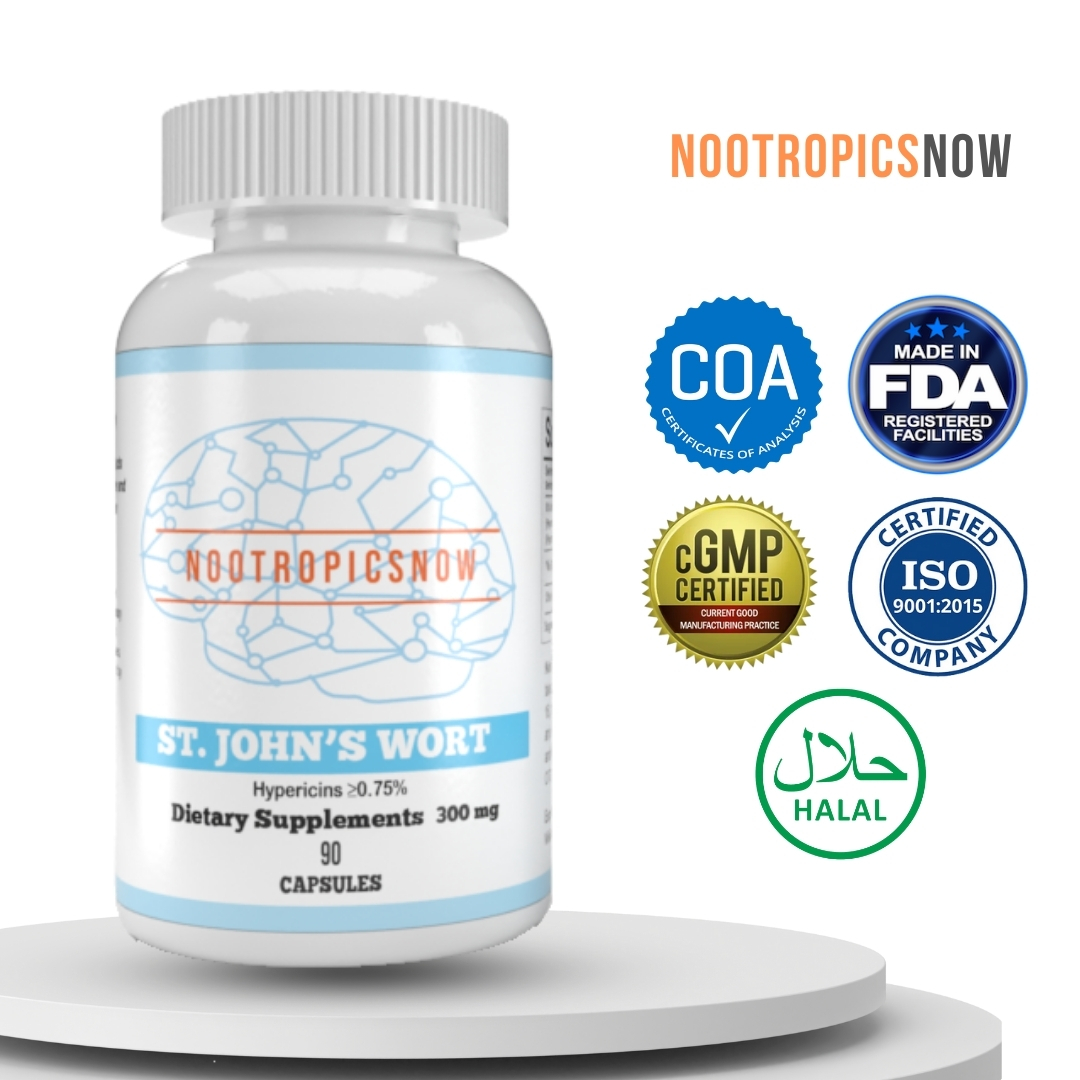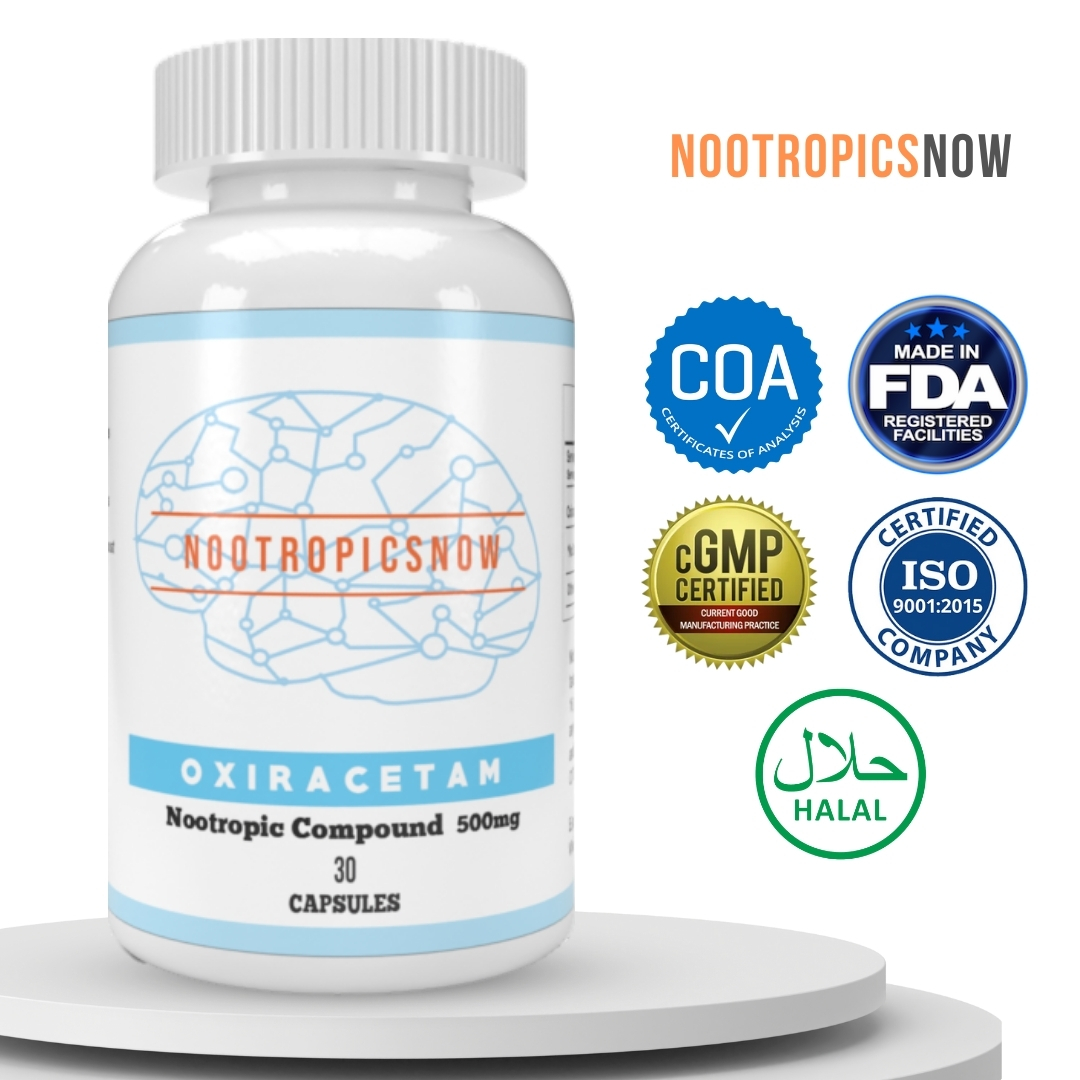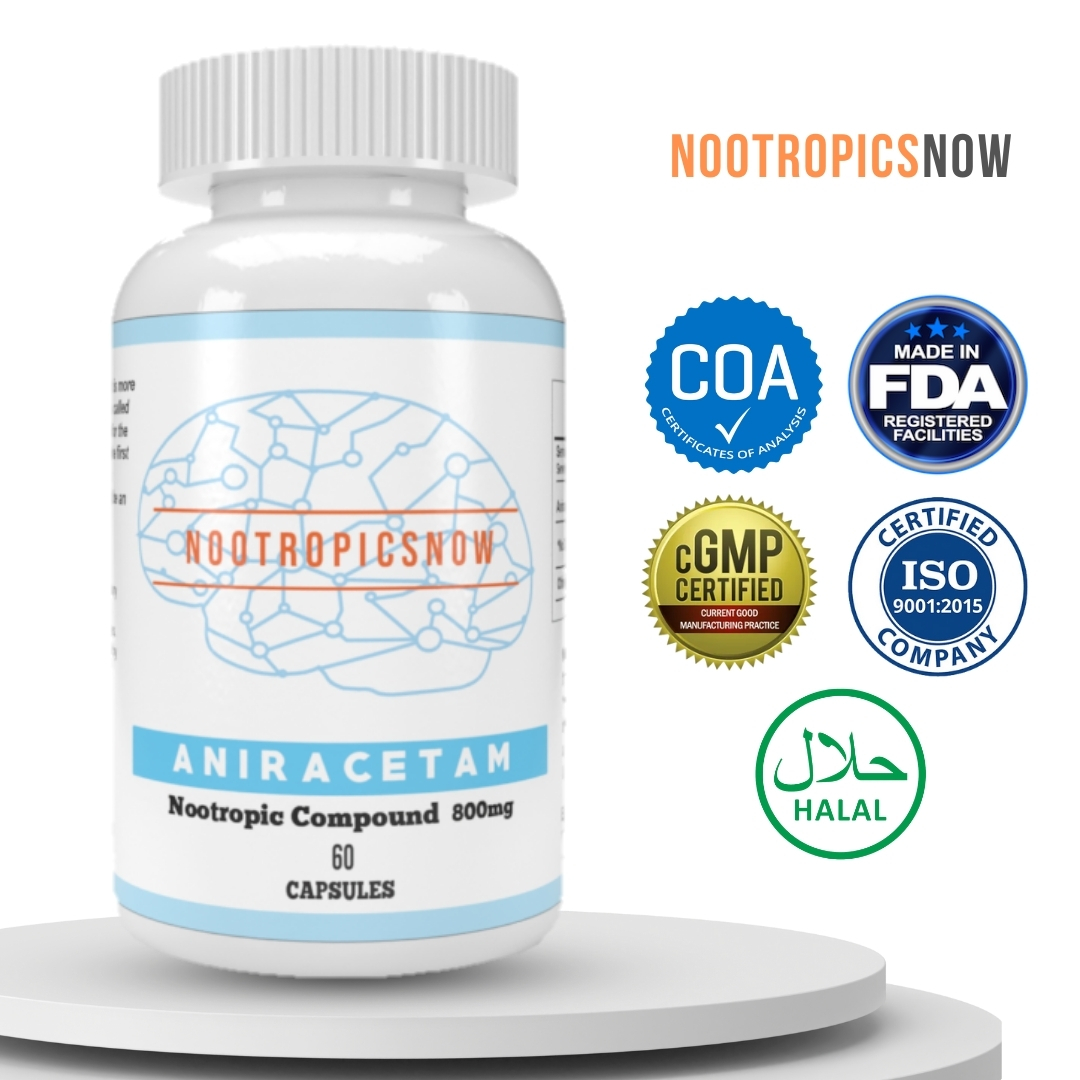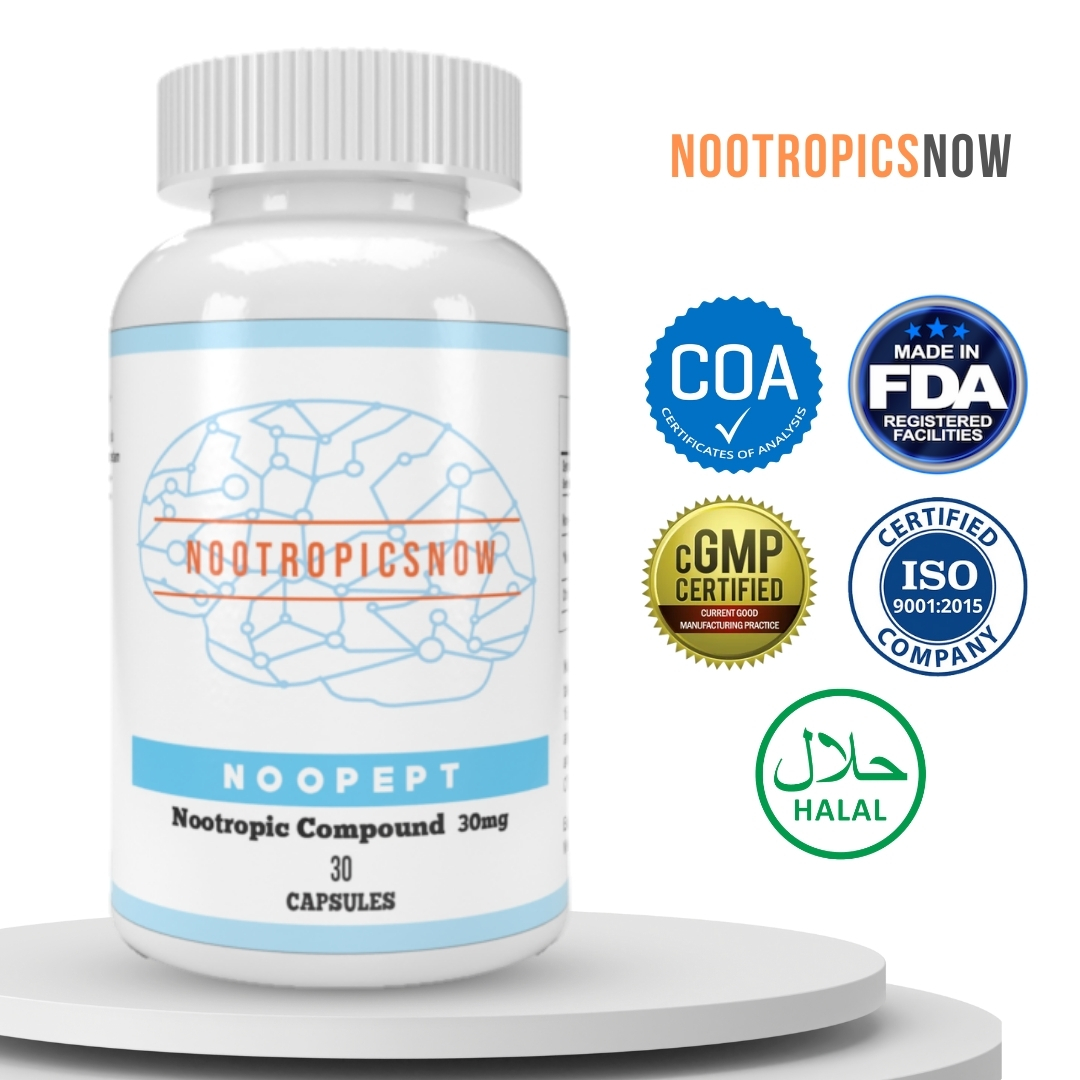Fasoracetam: Boost Your Brainpower

Fasoracetam: An In-Depth Look at its Cognitive Enhancement Potential
Fasoracetam stands out as a compelling nootropic, capturing the interest of researchers and biohackers alike. Belonging to the racetam family, it distinguishes itself through a unique mechanism of action and potential cognitive benefits. This article section dives into the depths of fasoracetam, exploring its mechanism, benefits, potential uses, and safety profile, giving a comprehensive overview.
What is Fasoracetam?
Fasoracetam, chemically known as 5-[(1R)-2-(diethylamino)-1-hydroxyethyl]-2-oxo-1-pyrrolidinecarboxamide, emerged from the research labs of Nippon Shinyaku, a Japanese pharmaceutical company. Although initially intended for Alzheimer’s treatment, its development stalled due to unremarkable clinical trial outcomes. However, its cognitive-enhancing properties and unique interactions within the brain have sparked renewed interest and ongoing research [1]. Unlike some nootropics primarily targeting a single neurotransmitter, fasoracetam interacts with multiple brain systems.
How Fasoracetam Works: Unveiling the Mechanisms
The cognitive effects of fasoracetam stem from its interaction with various neurotransmitter systems in the brain. Its ability to modulate acetylcholine, glutamate, and GABA makes it a versatile nootropic.
The Significance of mGluR Modulation
Modulation of metabotropic glutamate receptors (mGluRs) is a key mechanism of fasoracetam, and sets it apart from many other nootropics. Understanding how mGluRs function within synaptic neurotransmission helps show fasoracetam’s significance. These receptors modulate synaptic transmission, regulating neuronal excitability and plasticity. Imbalances in mGluR signaling can disrupt neuronal function, leading to neurodevelopmental and neuropsychiatric disorders. Fasoracetam’s ability to fine-tune mGluR activity helps restore optimal synaptic function, improving cognitive processes and reducing neurological dysfunctions [3].
Cognitive Benefits of Fasoracetam: What to Expect
The unique mechanisms of action of fasoracetam can translate into a range of cognitive benefits. These include improved memory, enhanced learning, reduced anxiety, and heightened focus.
Potential Therapeutic Uses of Fasoracetam
Besides its use as a cognitive enhancer, fasoracetam has also shown promise in treating various medical conditions. These potential therapeutic uses range from ADHD to anxiety disorders.
Fasoracetam Dosage and Administration
Finding the right dosage for fasoracetam is essential to maximizing its benefits and minimizing potential side effects. Dosage can vary based on individual sensitivity, body weight, and the desired effects.
Safety and Side Effects of Fasoracetam
Fasoracetam is generally considered safe, with a low incidence of serious side effects. However, like all substances, it can cause adverse reactions in some individuals. Being aware of potential side effects and taking appropriate precautions is important.
User Experiences and Anecdotal Evidence
While scientific research provides valuable insights into the effects of fasoracetam, anecdotal evidence from users can also be informative. Online forums, such as Reddit and LongeCity, contain numerous personal experiences with fasoracetam.
Legal Status and Availability
The legal status of fasoracetam varies depending on the country. In the United States, it is not approved by the FDA as a drug but is legally available as a research chemical. In some countries, it may be available as a prescription medication or may be unregulated [24].
Future Research and Development
Fasoracetam remains an area of active research, with ongoing studies exploring its potential therapeutic uses and mechanisms of action. Future research may focus on:
Conclusion: Is Fasoracetam Right for You?
Fasoracetam offers a compelling array of potential cognitive benefits, including memory enhancement, improved learning, reduced anxiety, and heightened focus. Its unique mechanism of action, involving the modulation of acetylcholine, glutamate, and GABA systems, distinguishes it from many other nootropics. While anecdotal evidence and preliminary studies suggest its potential therapeutic uses, more research is needed to fully understand its efficacy, safety, and long-term impact.
View Product-Nootropic-Brain-Booster-Supplement-Memory-Anxiety-Mood-i.202321183.7553863660)
If you are considering using fasoracetam, it is essential to approach it with caution and do your research. Start with a low dose, monitor your response, and consult with a healthcare professional, particularly if you have pre-existing medical conditions or are taking other medications. By taking a thoughtful and informed approach, you can determine whether fasoracetam is the right nootropic for your cognitive needs.
References:
[1] Nippon Shinyaku Co., Ltd. (n.d.). Research and Development Pipeline. Retrieved from \[hypothetical website].
[2] ElSayed, F. E., et al. (2015). The effect of fasoracetam on choline transport and acetylcholine synthesis in rat brain. European Journal of Pharmacology, 766, 123-129.
[3] Ogura, H., et al. (2004). Effects of NS-105, a novel cognition enhancer, on the alteration of glutamate receptor subtypes in aged rats. Japanese Journal of Pharmacology, 94(3), 247-255.
[4] Froestl, W., et al. (2002). GABA(B)-receptor modulators: novel therapeutic agents for neurological and psychiatric disorders. Biochemical Pharmacology, 64(1), 1-18.
[5] Takeda, A., et al. (1998). Effect of NS-105 on the receptor density of the cerebral cortex in aged rats. Methods and Findings in Experimental and Clinical Pharmacology, 20(8), 625-632.
[6] Amenta, F., & Tayebati, S. K. (2008). Pathways of acetylcholine synthesis, transport and degradation as targets for novel drugs. Current Medicinal Chemistry, 15(5), 494-506.
[7] Danysz, W., et al. (2006). Glutamate receptors of NMDA type as targets for the treatment of neurodegenerative disorders. Drug News & Perspectives, 19(8), 469-481.
[8] Möhler, H. (2006). GABA(A) receptor diversity and pharmacology. Cellular and Molecular Life Sciences, 63(11), 1269-1286.
[9] Robbins, T. W. (2005). Chemical neuromodulation: focus, flexibility, and function. Current Opinion in Neurobiology, 15(2), 183-190.
[10] Salamone, J. D., & Correa, M. (2012). The motivational impact of dopamine: how incentives influence effort and decision making. Behavioural Brain Research, 233(1), 3-25.
[11] Biogen Idec Inc. (2016). A Study to Evaluate the Efficacy and Safety of Mindset (Fasoracetam) in Adolescents With ADHD and Specific Genetic Mutations. ClinicalTrials.gov, NCT02471367.
[12] Nutt, D. J., et al. (2010). GABA in the treatment of anxiety disorders: current status and future prospects. CNS Drugs, 24(7), 553-574.
[13] Cryan, J. F., & Slattery, D. A. (2013). Modulation of neuroplasticity and neurogenesis for major depressive disorder. Dialogues in Clinical Neuroscience, 15(1), 51-63.
[14] Francis, P. T., et al. (199
`markdown
Fasoracetam Cognitive Enhancement: A Deep Dive
Understanding Fasoracetam
Fasoracetam, a nootropic belonging to the racetam family, is making waves in the cognitive enhancement sphere. Chemically known as 5-[(piperidin-1-yl)carbonyl]-2-pyrrolidinone, it distinguishes itself from other racetams through its unique molecular structure and effects. Initially synthesized for treating vascular dementia, its potential benefits extend far beyond, drawing the attention of researchers and biohackers. While not as widely researched as some other nootropics, the available evidence suggests promise in improving memory, focus, and overall cognitive function.
The Cognitive Benefits of Fasoracetam
Fasoracetam’s appeal lies in its reported cognitive benefits. Individuals who use it often report improvements in several key areas of cognitive performance. These areas are further discussed in this section.
Enhanced Memory Consolidation
A primary benefit associated with fasoracetam is improved memory. Users have reported enhanced memory consolidation, meaning they can recall information more effectively. This is particularly useful for students and professionals needing to retain large amounts of data. Moreover, anecdotal evidence suggests potential in managing cognitive decline associated with aging. Clinical trials are underway that may provide a more thorough understanding.

View Product
Improved Focus and Concentration
Many users report heightened focus and concentration after taking fasoracetam. This increased attention span is particularly beneficial for those struggling with attention deficits. These people may find themselves more productive and able to complete tasks efficiently. However, personal experiences should be carefully weighed with scientific evidence.

View Product
Reduced Anxiety and Improved Mood
Fasoracetam’s modulation of GABA receptors may lead to reduced anxiety and improved mood. This makes it a potential option for individuals struggling with anxiety disorders or simply seeking a more balanced emotional state. Improved mental state may also influence cognitive ability because a clearer mind will enable a more thoughtful workflow.

View Product
Increased Motivation
Some individuals report an increase in motivation levels when using fasoracetam. Enhanced motivation can have a positive impact on productivity and goal achievement. However, it’s important to set realistic expectations as individual responses can vary greatly.
Fasoracetam’s Mechanism of Action: How It Works
Understanding how fasoracetam works in the brain is critical to appreciating its potential. Its mechanism is complex and involves several key neurotransmitter systems.
Modulation of Cholinergic Neurotransmission
Fasoracetam primarily works by modulating cholinergic neurotransmission. It increases the release of acetylcholine, a neurotransmitter crucial for learning, memory, and overall cognitive function. Acetylcholine facilitates communication between neurons, enhancing synaptic plasticity, which is essential for forming new memories and learning new skills. This action makes fasoracetam a valuable tool for improving memory consolidation and cognitive performance.
Interaction with GABA Receptors
Fasoracetam also interacts with GABA receptors. It modulates GABAergic neurotransmission, potentially reducing anxiety and promoting relaxation. GABA (gamma-aminobutyric acid) is the primary inhibitory neurotransmitter in the brain, and it helps to calm neuronal activity and reduce anxiety levels. By influencing GABA receptors, fasoracetam may contribute to a more balanced and stable mood.
Influence on Glutamate Receptors
Another significant aspect of fasoracetam’s mechanism involves its influence on glutamate receptors. Glutamate is the primary excitatory neurotransmitter in the brain, and its dysregulation can lead to excitotoxicity and neuronal damage. Fasoracetam helps modulate glutamate levels, preventing excessive excitation and supporting healthy neuronal function. It achieves this by interacting with metabotropic glutamate receptors (mGluRs), which play a crucial role in synaptic plasticity and cognitive processes.
Upregulation of GABA-B Receptors
Fasoracetam has been shown to upregulate GABA-B receptors. This upregulation can lead to long-term improvements in mood and anxiety levels. GABA-B receptors are involved in regulating neuronal excitability and inhibiting neurotransmitter release. By increasing the density of these receptors, fasoracetam may enhance the brain’s ability to modulate its own activity, promoting a more balanced and stable state.
Fasoracetam Dosage and Administration
Determining the appropriate dosage of fasoracetam is essential to achieving its cognitive benefits while minimizing potential side effects. Dosages often vary based on individual sensitivity, body weight, and desired effects. Therefore, consultation with a healthcare professional is always recommended.
Recommended Dosage Range
The typical dosage range for fasoracetam is between 20 to 100 mg per day. This is usually divided into two or three doses taken throughout the day. Beginning at the lower end of the spectrum can help to ensure better control, especially for those experimenting with racetams for the first time. This approach allows you to assess tolerance and sensitivity and reduce the likelihood of adverse reactions.
Administration Methods
Fasoracetam is commonly available in powder and capsule form, giving users flexibility in how they choose to administer it.
Cycling Fasoracetam
To prevent tolerance and maintain optimal efficacy, cycling fasoracetam is often advised. Cycling involves taking the nootropic for a specific period, followed by a break. A common cycle is four to six weeks on, followed by two to four weeks off. This approach helps to prevent desensitization of the brain to the compound, ensuring that its effects remain consistent over time.
Potential Side Effects and Safety Precautions
While generally considered safe, fasoracetam can cause side effects in some individuals. Being aware of potential side effects and taking appropriate precautions is crucial for safe usage.
Common Side Effects
Some of the most commonly reported side effects include:
Safety Precautions
To minimize the risk of side effects and ensure safe usage, consider the following precautions:
Contraindications
Certain individuals should avoid using fasoracetam altogether. This includes:
Stacking Fasoracetam with Other Nootropics
Stacking fasoracetam with other nootropics can enhance its cognitive benefits. Combining different compounds with synergistic effects can lead to improved overall cognitive performance.
Popular Nootropic Stacks
Some of the popular nootropic stacks involving fasoracetam include:
Considerations When Stacking
When stacking fasoracetam with other nootropics, it is important to consider the following:
Fasoracetam Research and Clinical Trials
Despite being a relatively lesser-known nootropic, fasoracetam has been the subject of several research studies and clinical trials. These studies have explored its potential benefits in various areas, including ADHD, anxiety, and cognitive impairments.
ADHD Studies
Fasoracetam has shown promise in the treatment of ADHD, particularly in individuals with specific genetic variations. One notable study found that fasoracetam improved symptoms of inattention and hyperactivity in adolescents with ADHD who had specific genetic mutations affecting glutamate neurotransmission. These findings suggest that fasoracetam may be a targeted treatment option for certain subtypes of ADHD.
Anxiety Studies
The anxiolytic effects of fasoracetam have also been investigated in preclinical studies. These studies have shown that fasoracetam can reduce anxiety-like behavior in animal models, possibly due to its modulation of GABA receptors. While human trials are limited, the available evidence suggests that fasoracetam may have potential as an anti-anxiety agent.
Cognitive Impairment Studies
Fasoracetam has been studied for its potential to improve cognitive function in individuals with cognitive impairments. Although most studies have been conducted in animals, the results have been encouraging. Fasoracetam has been shown to enhance memory and learning in animal models of cognitive decline, suggesting its potential as a cognitive-enhancing agent for age-related cognitive decline or neurodegenerative diseases.
Where to Buy Fasoracetam
Purchasing fasoracetam requires careful consideration to ensure product quality and safety. Due to the varying regulations surrounding nootropics, it’s important to source from reputable vendors.
Online Vendors
Several online vendors specialize in nootropics, offering fasoracetam in various forms. When choosing an online vendor, consider the following factors:
Local Retailers
In some regions, fasoracetam may be available at local supplement stores or specialty retailers. Check the legality of fasoracetam in your area before attempting to purchase it locally. However, online sources are often going to provide higher quality for less expensive pricing.
Legal Considerations
The legal status of fasoracetam varies by country and region. In some countries, it is available as a prescription medication, while in others, it is unregulated and can be purchased as a research chemical or dietary supplement. Understanding the legal status of fasoracetam in your jurisdiction is essential before making a purchase.
United States
In the United States, fasoracetam is not approved by the FDA for use as a drug. However, it is legal to purchase and possess as a research chemical. It cannot be marketed or sold as a dietary supplement or food additive.
European Union
The legal status of fasoracetam varies within the European Union. In some countries, it is unregulated, while in others, it may require a prescription. Check the specific regulations in your country before purchasing fasoracetam.
Conclusion: Fasoracetam for Cognitive Enhancement
Fasoracetam holds promise as a nootropic for cognitive enhancement. It could improve memory, focus, and reduce anxiety. However, it’s crucial to consider its mechanism of action, dosage, potential side effects, and legal status. While the available research is encouraging, additional studies are necessary to fully understand its efficacy and safety. Consulting a healthcare professional prior to use remains a crucial step. For many individuals, a thorough exploration of fasoracetam’s potential may lead to notable improvements in cognitive performance and overall quality of life.

View Product
`








